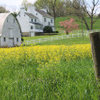Is this Asparagus asparagoides (in our regional park?)
gorlash
13 years ago
Related Stories

FARM YOUR YARDHow to Farm Your Parking Strip
Get an up-close look at a thriving street-side edible garden, one of many sprouting up in Seattle
Full Story
EDIBLE GARDENSNatural Ways to Get Rid of Weeds in Your Garden
Use these techniques to help prevent the spread of weeds and to learn about your soil
Full Story
GARDENING GUIDESNew Ways to Think About All That Mulch in the Garden
Before you go making a mountain out of a mulch hill, learn the facts about what your plants and soil really want
Full Story
SPRING GARDENINGSummer Crops: How to Grow Strawberries
Pluck your own sweet strawberries right from the garden vine for smoothies, salads or eating then and there
Full StoryMore Discussions











flora_uk
missingtheobvious
Related Professionals
Beavercreek Landscape Architects & Landscape Designers · Grand Haven Landscape Architects & Landscape Designers · Oconomowoc Landscape Architects & Landscape Designers · Stamford Landscape Contractors · Azalea Park Landscape Contractors · Eustis Landscape Contractors · Gresham Landscape Contractors · Hayden Landscape Contractors · Hayward Landscape Contractors · Oak Harbor Landscape Contractors · Saint Paul Landscape Contractors · Soddy Daisy Landscape Contractors · South Portland Landscape Contractors · Tustin Landscape Contractors · West Chicago Landscape ContractorsgorlashOriginal Author
gorlashOriginal Author
gorlashOriginal Author
missingtheobvious
gardenguru1950
gorlashOriginal Author
Embothrium
flora_uk
gorlashOriginal Author
saltcedar